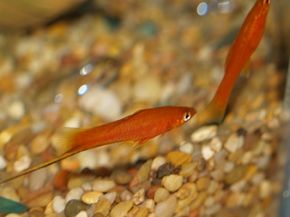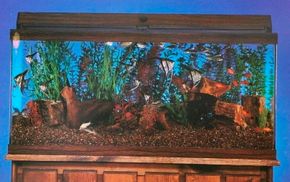The amount of basic aquarium maintenance you have to do is directly related to how closely you follow the three rules of fishkeeping.
If the tank is overcrowded, if you consistently feed the fish too much food, and if you seldom do partial water changes, the filter system will be unable to keep the water quality where it should be. If you find yourself dealing with diseased and dying fish on a regular basis, you are almost certainly doing at least one of these three things wrong.
Advertisement
Basic aquarium maintenance is not time consuming if the tank is set up correctly and you go about it properly. You should get in the habit of looking at the fish closely every day or two, as well as checking the water temperature.
Once each week, clean the inside of the front glass (and the side glass if you want), change 10 or 15 percent of the water, and clean the outside of the glass. You could do this every ten days, but it is usually easier to remember if you perform maintenance on the same day each week.
If the tank is lightly stocked and you are careful about not overfeeding, this basic aquarium maintenance can be done every other week. Undercrowding also means that more extensive maintenance, particularly on the filter, doesn't have to be done as often either.
If you keep large fish that consume greater amounts of food and thus produce more waste products, you may have to change as much as 50 percent of the water each time.
Note that tank size makes a difference, too. Not only are larger tanks a more stable aquatic environment for the fish, but they also require less work than smaller aquariums.
When doing water changes, be sure to use what may be the most important accessory you can own: a hydro-vacuum. Essentially, the hydro-vacuum consists of a hose to siphon the water from the tank with a special attachment on the end that goes into the tank. The attachment is a long, clear tube that is much wider than the siphon hose.
Learn more about the proper way to maintain your aquarium with the use of a hydro-vacuum on the next page.
To learn more about freshwater aquariums, see:
Advertisement



